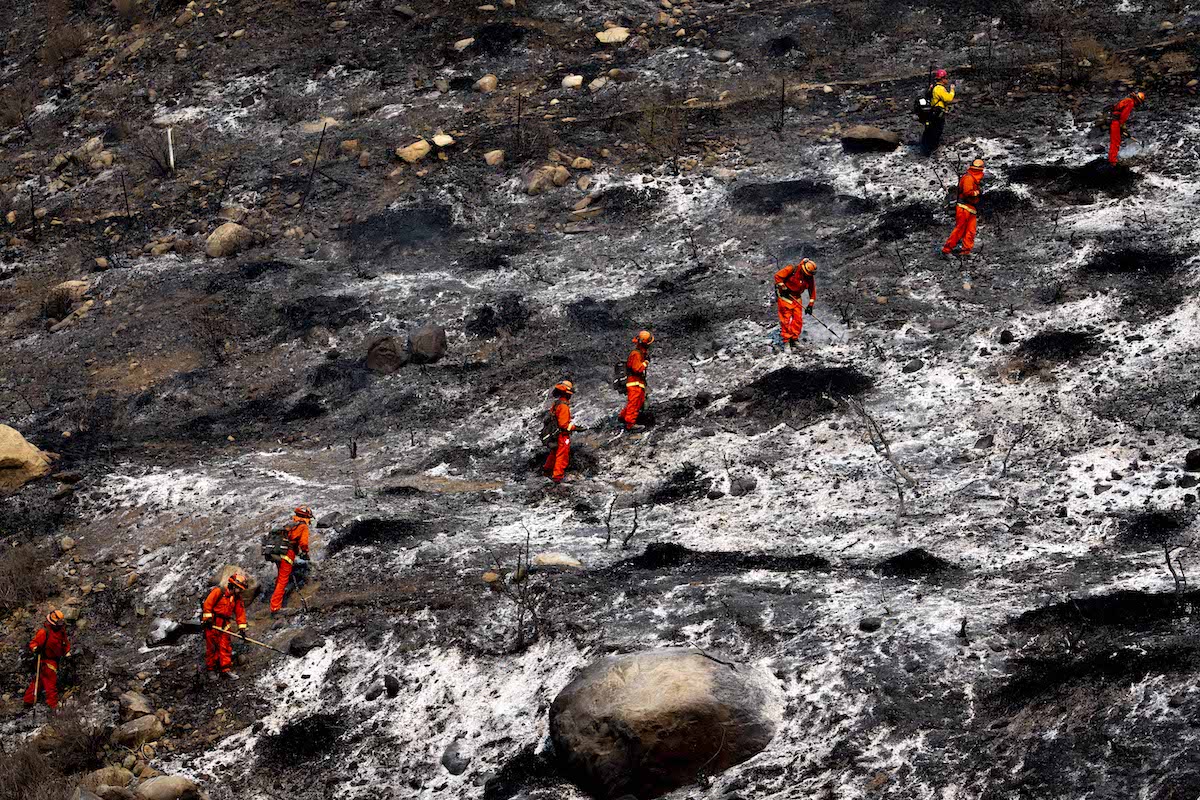Santa Barbara County Fire Chief Recounts How Alisal Fire Got the Jump on Firefighters
Warns Supervisors of Looming Threat of Debris Flow in Fire-Scarred Refugio Canyon

One week after the Alisal Fire erupted on the other side of the mountains last Monday afternoon, it is now 93 percent contained, and all evacuation orders have been lifted. Ten residential properties were destroyed in the process, the state of California reckons it lost $14 million for every day Highway 101 and the Union Pacific railroad tracks, and the county’s landfill up in Tajiguas Canyon has been temporarily shut down, meaning South Coast trash and recyclables will be delivered to facilities in Ventura County at an additional cost of $500,000 a month. That figure, however, does not include the $2 million a month in lost tipping fees the county will lose until the landfill reopens.
County Supervisors heard Santa Barbara County Fire Chief Mark Hartwig describe how fast the flames got the jump on local firefighters — who focused more on evacuation than containment in those early hours — the day the fire was first reported. Before all was said and done, 939 individuals would be evacuated as 439 properties were placed at risk.
Sign up for Indy Today to receive fresh news from Independent.com, in your inbox, every morning.
At that time, Hartwig recounted, winds were blowing so hard and fast it was not safe to allow the airborne firefighting resources to take to the sky. By nightfall on the first day, two fires were threatening to converge on the county’s just-opened new $150 million material recovery facility (MRF), a relatively high-tech industrial installation where food scraps and recyclables are separated from the South Coast’s daily waste stream and diverted from the landfill.
Melted in the fire was a network of PVC pipes that resemble a giant plastic spider’s web that carry enough methane gas produced at the landfill to power 1,000 homes when converted into electricity. Until that piping can be replaced and the methane generated addressed, the landfill will remain shut down.
Initially, the supervisors had been warned, kinks in the supply chain might hamper efforts to replace that piping. On Tuesday, they were told those challenges were exaggerated.
Still of concern, however, is the prospect of debris flows cascading violently down Refugio Canyon should heavy rains bombard the fire-scarred ravine. The threat at Refugio Canyon, the supervisors were told, is every bit as big — if not bigger — than the one posed and subsequently materialized in the wake of the Sherpa Fire above El Capitán five years ago.
Find all our updates on the Alisal Fire here.
Support the Santa Barbara Independent through a long-term or a single contribution.



